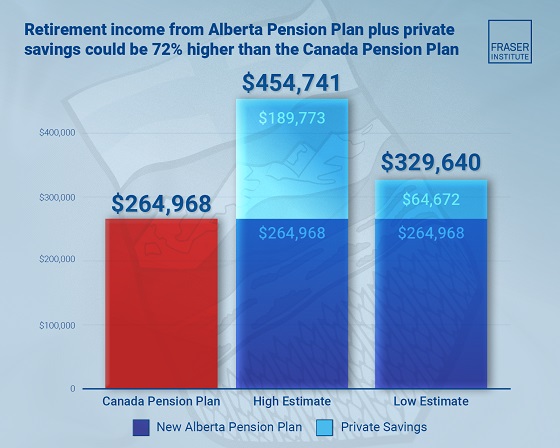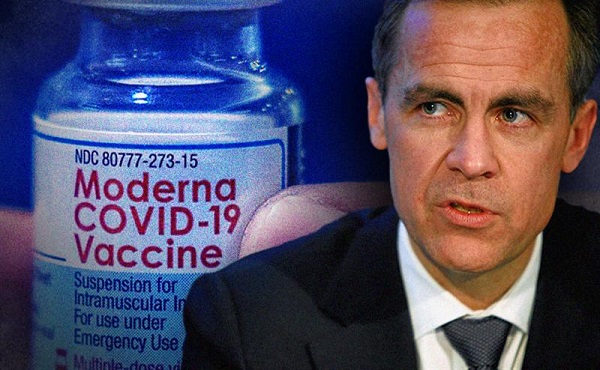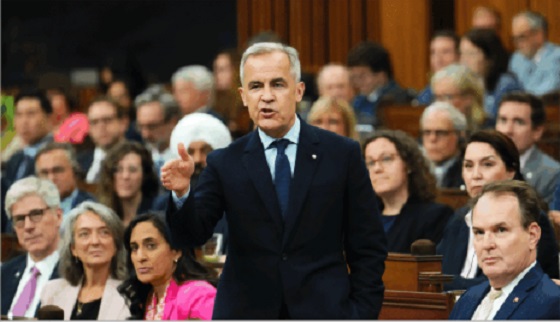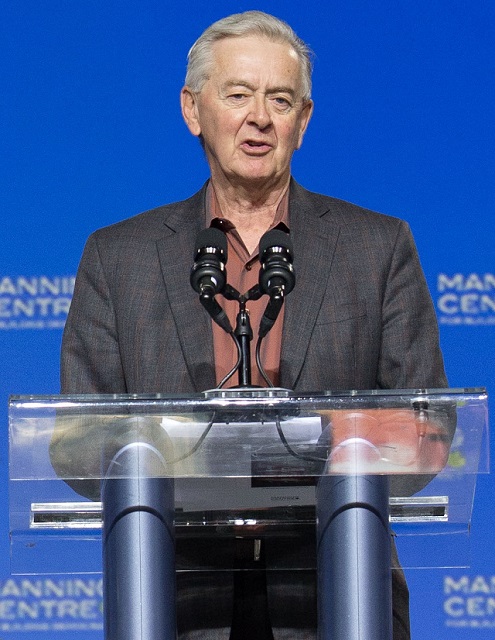Alberta
Province funding 50 more Edmonton Police Service Officers to tackle high crime areas

Safer streets for Edmonton
Alberta’s government is fighting rising crime in Edmonton with an $8.3-million investment to help hire 50 new police officers.
Edmontonians have a right to walk through their city streets or take public transit without fearing for their safety. Due to rising acts of violence, the government is taking direct action to keep Edmontonians safe.
By investing in the Edmonton Police Service (EPS) to support their efforts to recruit, train and deploy 50 new officers, high-crime areas like transit centres and the downtown core will see increased police presence.
“Our government will do whatever it takes to address the concerning escalating crime rates, particularly in vital areas like public transit and the downtown core where social disorder is prevalent. This funding will help strengthen the capabilities of law enforcement and make sure they have the necessary tools and personnel to improve public safety and fight criminals who continue to prey on vulnerable residents.”
The EPS is actively recruiting new members for this initiative. These additional officers will be strategically placed in high-crime areas with the flexibility to be redeployed to other parts of the city based on evolving needs. Provincial funding will help pay for police officer salaries and benefits and equipment needs like vehicles, uniforms, radios and body-worn cameras.
“These are much-needed resources, and though hiring and training will take time before officers hit city streets, we know their presence will accelerate our existing efforts. We have redeployed our front-line resources to places like transit and the downtown and have increased recruit class sizes to get ahead of service demands, and these additional officers are the next step in tackling Edmonton’s high-crime areas. We are grateful for the funding and support of the provincial government and look forward to the impact the officers will have on our streets.”
“Edmontonians have been loud and clear that safe public spaces are a priority. The funding and prioritization of transit centres and the core is an investment in our shared, long-term commitment to create a safe and vibrant city.”
“The Edmonton Police Commission has advocated for police funding necessary to address the myriad community safety issues facing our city, and we appreciate the provincial government making good on its commitment to fund 50 additional front-line officers. This investment will help support the police service’s long-term strategy of making our streets safer.”
“The DRC appreciates the collaborative effort the Edmonton Police Service and provincial government have put into addressing high-crime areas. We know from other cities that the presence of law enforcement and proactive policing increases the perception of safety and can even reduce incidents of crime and disorder. Through this funding, we look forward to seeing more police deployed throughout the core, working towards a safer, more vibrant and more connected downtown.”
The addition of new officers builds on several actions the government has already taken to improve public safety on Edmonton’s streets, including implementing a pilot project to team Alberta Sheriffs with EPS officers, adding more local positions to the Sheriffs’ Safer Communities and Neighbourhoods (SCAN) unit, and a $5-million grant to improve safety on the city’s transit network.
Quick facts
- Funding breakdown:
- $4.5 million for officer salaries and benefits
- $2.5 million for one-time costs like vehicles, uniforms, radios and workstations
- $850,000 for ongoing technology costs
- $500,000 for one-time recruitment expansion efforts
Related news
- Transit safety and violent crime: Enough is enough (Apr 4, 2023)
- More sheriffs in Calgary and Edmonton (Nov 24, 2023)
Alberta
Median workers in Alberta could receive 72% more under Alberta Pension Plan compared to Canada Pension Plan

From the Fraser Institute
By Tegan Hill and Joel Emes
Moving from the CPP to a provincial pension plan would generate savings for Albertans in the form of lower contribution rates (which could be used to increase private retirement savings while receiving the same pension benefits as the CPP under the new provincial pension), finds a new study published today by the Fraser Institute, an independent, non-partisan Canadian public policy think-tank.
“Due to Alberta’s comparatively high rates of employment, higher average incomes, and younger population, Albertans would pay a lower contribution rate through a separate provincial pension plan while receiving the same benefits as under the CPP,” said Tegan Hill, director of Alberta policy at the Fraser Institute and co-author of Illustrating the Potential of an Alberta Pension Plan.
Assuming Albertans invested the savings from moving to a provincial pension plan into a private retirement account, and assuming a contribution rate of 5.85 per cent, workers earning the median income in Alberta ($53,061 in 2025) could accrue a stream of retirement payments totalling $454,741 (pre-tax)—a 71.6 per cent increase from their stream of CPP payments ($264,968).
Put differently, under the CPP, a median worker receives a total of $264,968 in retirement income over their life. If an Alberta worker saved the difference between what they pay now into the CPP and what they would pay into a new provincial plan, the income they would receive in retirement increases. If the contribution rate for the new provincial plan was 5.85 per cent—the lower of the available estimates—the increase in retirement income would total $189,773 (or an increase of 71.6 per cent).
If the contribution rate for a new Alberta pension plan was 8.21 per cent—the higher of the available estimates—a median Alberta worker would still receive an additional $64,672 in retirement income over their life, a marked increase of 24.4 per cent compared to the CPP alone.
Put differently, assuming a contribution rate of 8.21 per cent, Albertan workers earning the median income could accrue a stream of retirement payments totaling $329,640 (pre-tax) under a provincial pension plan—a 24.4 per cent increase from their stream of CPP payments.
“While the full costs and benefits of a provincial pension plan must be considered, its clear that Albertans could benefit from higher retirement payments under a provincial pension plan, compared to the CPP,” Hill said.
Illustrating the Potential of an Alberta Pension Plan
- Due to Alberta’s comparatively high rates of employment, higher average incomes, and younger population, Albertans would pay a lower contribution rate with a separate provincial pension plan, compared with the CPP, while receiving the same benefits as under the CPP.
- Put differently, moving from the CPP to a provincial pension plan would generate savings for Albertans, which could be used to increase private retirement income. This essay assesses the potential savings for Albertans of moving to a provincial pension plan. It also estimates an Albertan’s potential increase in total retirement income, if those savings were invested in a private account.
- Depending on the contribution rate used for an Alberta pension plan (APP), ranging from 5.85 to 8.2 percent, an individual earning the CPP’s yearly maximum pensionable earnings ($71,300 in 2025), would accrue a stream of retirement payments under the total APP (APP plus private retirement savings), yielding a total retirement income of between $429,524 and $584,235. This would be 22.9 to 67.1 percent higher, respectively, than their stream of CPP payments ($349,545).
- An individual earning the median income in Alberta ($53,061 in 2025), would accrue a stream of retirement payments under the total APP (APP plus private retirement savings), yielding a total retirement income of between $329,640 and $454,741, which is between 24.4 percent to 71.6 percent higher, respectively, than their stream of CPP payments ($264,968).

Joel Emes
Alberta
Alberta ban on men in women’s sports doesn’t apply to athletes from other provinces

From LifeSiteNews
Alberta’s Fairness and Safety in Sport Act bans transgender males from women’s sports within the province but cannot regulate out-of-province transgender athletes.
Alberta’s ban on gender-confused males competing in women’s sports will not apply to out-of-province athletes.
In an interview posted July 12 by the Canadian Press, Alberta Tourism and Sport Minister Andrew Boitchenko revealed that Alberta does not have the jurisdiction to regulate out-of-province, gender-confused males from competing against female athletes.
“We don’t have authority to regulate athletes from different jurisdictions,” he said in an interview.
Ministry spokeswoman Vanessa Gomez further explained that while Alberta passed legislation to protect women within their province, outside sporting organizations are bound by federal or international guidelines.
As a result, Albertan female athletes will be spared from competing against men during provincial competition but must face male competitors during inter-provincial events.
In December, Alberta passed the Fairness and Safety in Sport Act to prevent biological men who claim to be women from competing in women’s sports. The legislation will take effect on September 1 and will apply to all school boards, universities, as well as provincial sports organizations.
The move comes after studies have repeatedly revealed what almost everyone already knew was true, namely, that males have a considerable advantage over women in athletics.
Indeed, a recent study published in Sports Medicine found that a year of “transgender” hormone drugs results in “very modest changes” in the inherent strength advantages of men.
Additionally, male athletes competing in women’s sports are known to be violent, especially toward female athletes who oppose their dominance in women’s sports.
Last August, Albertan male powerlifter “Anne” Andres was suspended for six months after a slew of death threats and harassments against his female competitors.
In February, Andres ranted about why men should be able to compete in women’s competitions, calling for “the Ontario lifter” who opposes this, apparently referring to powerlifter April Hutchinson, to “die painfully.”
Interestingly, while Andres was suspended for six months for issuing death threats, Hutchinson was suspended for two years after publicly condemning him for stealing victories from women and then mocking his female competitors on social media. Her suspension was later reduced to a year.
-

 Addictions1 day ago
Addictions1 day agoWhy B.C.’s new witnessed dosing guidelines are built to fail
-

 Business1 day ago
Business1 day agoCarney Liberals quietly award Pfizer, Moderna nearly $400 million for new COVID shot contracts
-

 Frontier Centre for Public Policy2 days ago
Frontier Centre for Public Policy2 days agoCanada’s New Border Bill Spies On You, Not The Bad Guys
-

 Energy2 days ago
Energy2 days agoCNN’s Shock Climate Polling Data Reinforces Trump’s Energy Agenda
-

 Opinion1 day ago
Opinion1 day agoCharity Campaigns vs. Charity Donations
-

 Business1 day ago
Business1 day agoMark Carney’s Fiscal Fantasy Will Bankrupt Canada
-

 Opinion1 day ago
Opinion1 day agoPreston Manning: Three Wise Men from the East, Again
-

 Red Deer1 day ago
Red Deer1 day agoWesterner Days Attraction pass and New Experiences!





